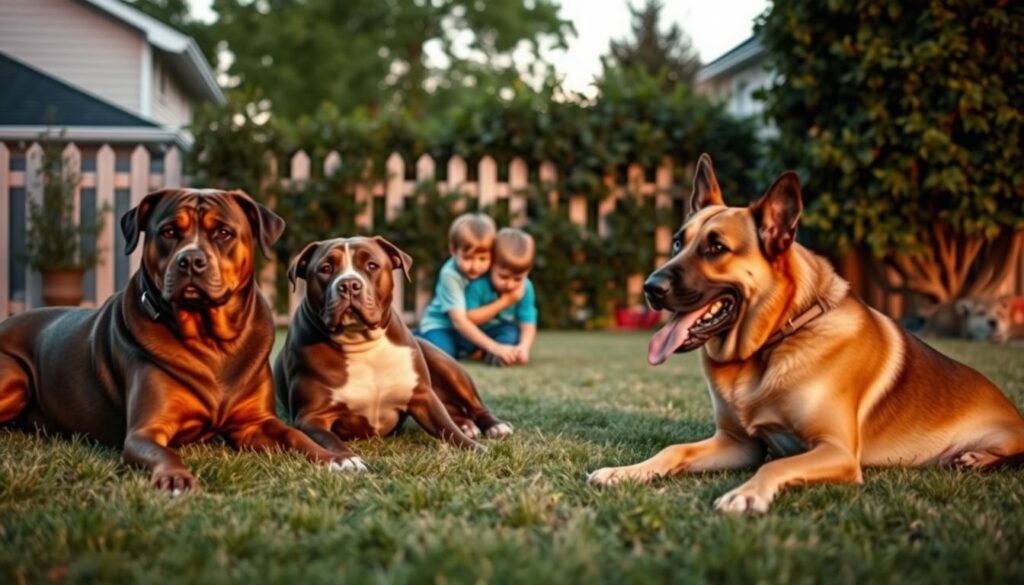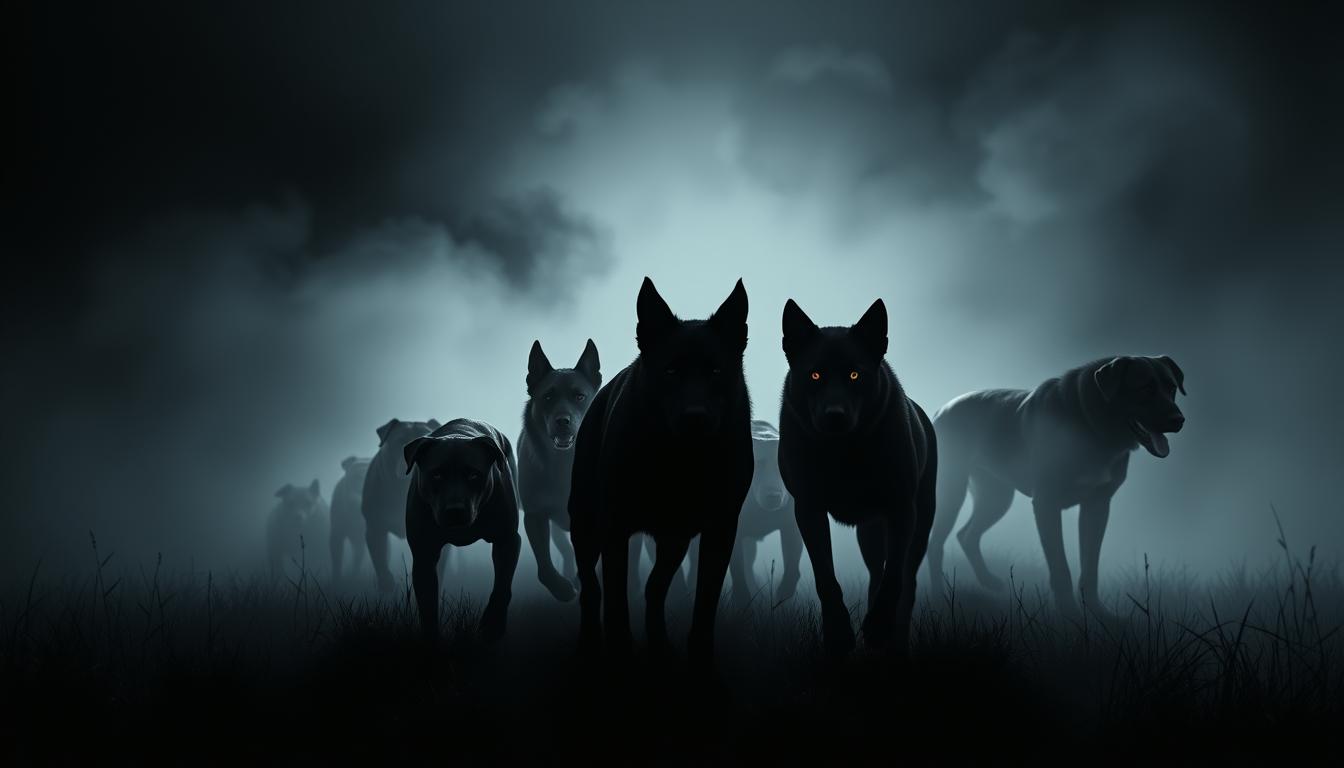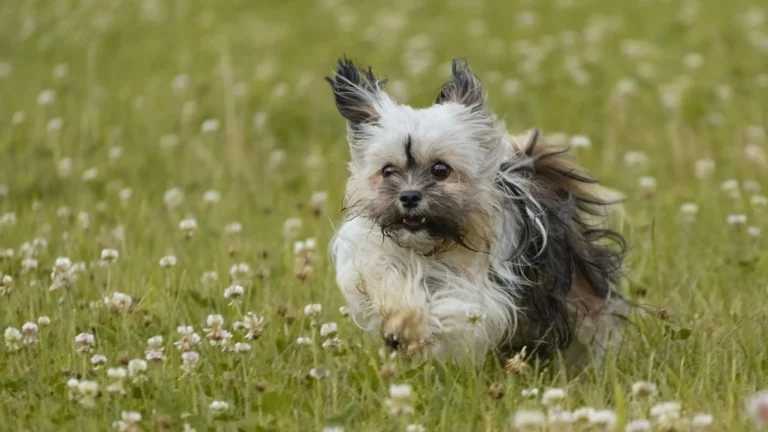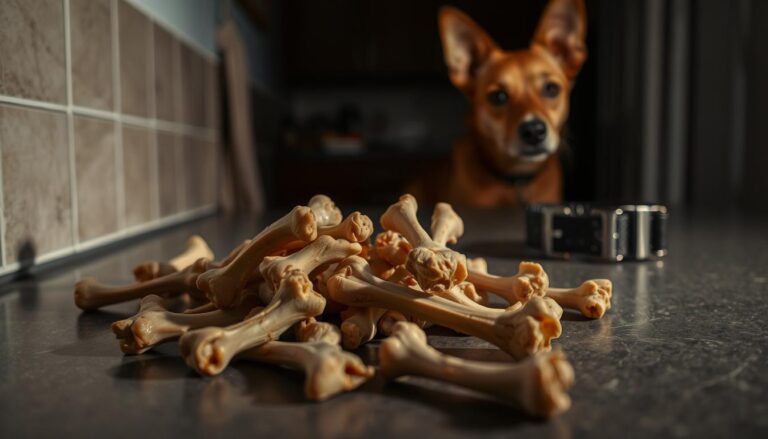Most Scary Dogs? What Pet Owners Should Really Know
The first time I met a powerful dog, my heart skipped a beat. I had always heard scary stories about certain breeds. But, the truth is often different.
Learning about frightening dogs isn’t about being scared. It’s about understanding the real story behind their reputation. Every dog, big or small, can be a loving friend or a protector. It all depends on how well they are cared for and trained.
What we think about scary dogs might be influenced by the media or our own experiences. But, experts like trainers and vets say it’s more about how a dog is raised and its personality than its breed.
This article will help you understand dogs better. We’ll clear up myths and share tips for a safe, loving bond with powerful breeds. We’ll look at the science and offer practical advice.
Are you ready to see beyond the scary looks and find out what these dogs are really like? Let’s start.
Table of Contents
Understanding Canine Aggression and Bite Force
Exploring dangerous dog breeds and aggressive canines is complex. Dogs have unique traits that affect their behavior and aggression. It’s important to understand these factors.
- Genetic predisposition
- Early socialization experiences
- Training methods
- Environmental conditions
The Science Behind Dog Aggression
Aggressive dogs are shaped by both inside and outside factors. Research has found certain genes linked to aggression in some breeds.
“Not all dogs are inherently dangerous. Environment and training play critical roles in shaping behavior.” – Dr. Sarah Martinez, Canine Behavior Specialist
Measuring Bite Force in Dangerous Breeds
Bite force differs among dog breeds. This can tell us about a dog’s potential in aggressive situations.
| Dog Breed | Bite Force (PSI) | Relative Strength |
|---|---|---|
| Kangal | 743 | Highest |
| Pit Bull | 235 | Moderate |
| German Shepherd | 238 | Moderate |
Environmental Factors Affecting Dog Behavior
Your dog’s behavior is not set in stone. Proper training, socialization, and positive reinforcement can help. This can reduce aggression in dangerous breeds.
Important environmental factors include early socialization, consistent training, and enough mental and physical activity.
Most Scary Dogs: Top Breeds Known for Intimidation
Exploring the world of scary dogs reveals some breeds that stand out. They are known for their intimidating looks and strong bodies. These dogs have earned respect and fear from many.
Some of the most notable menacing dog breeds include:
- American Pit Bull Terriers
- Rottweilers
- German Shepherds
- Doberman Pinschers
Each of these dogs has unique traits that make them seem scary. Their strong bodies, alert stance, and past roles in protection have shaped how people see them.
“A dog’s behavior is more about training and environment than breed stereotypes.” – Canine Behavior Experts
Physical traits play a big part in why some breeds seem menacing. Their big muscles, deep chests, and strong jaws make them look intimidating. Breed-specific traits do not automatically mean aggressive behavior.
It’s important to look beyond stereotypes when understanding these dogs. Training, socialization, and responsible ownership are key. How you raise and care for these breeds can greatly affect their behavior and how they interact with others.
The Power Players: Mastiff Family Breeds
The Mastiff family is known for being some of the most powerful and impressive dogs. They have great physical strength and unique personalities. This makes them both interesting and challenging pets.
Mastiff breeds are famous for their size and protective nature. Their big size acts as a natural warning, making them great protectors. Knowing their special traits helps owners decide if they’re right for their homes.
Bullmastiff Characteristics and Temperament
Bullmastiffs are perfect examples of powerful guard dogs. They can weigh up to 130 pounds and were bred for protection. Their main features are:
- Muscular and robust physical build
- Loyal and protective temperament
- Relatively calm disposition with proper training
- Strong bond with family members
Tibetan Mastiff as Guardian Dogs
Tibetan Mastiffs come from the Himalayas. These independent and intelligent dogs have been traditional guardians for centuries. Their main traits are:
- Exceptional territorial instincts
- High intelligence and independent nature
- Strong protective drive
- Thick, weather-resistant coat
Central Asian Shepherd Traits
Central Asian Shepherds are another impressive mastiff-type breed. They are known for their bravery and ability to protect in tough environments.
Proper socialization and professional training are crucial for managing these powerful and potentially dangerous dog breeds.
Working Dogs with Protective Instincts
Working dogs are key in keeping communities safe and helping professionals. They are not just pets but highly skilled workers. German Shepherds and Belgian Malinois are top examples of aggressive canines with amazing abilities.
Law enforcement and the military use these smart breeds for important tasks. Their special traits make them perfect for specific jobs:
- Exceptional sensory perception
- High trainability
- Strong protective instincts
- Rapid response capabilities
Choosing working dogs is a careful process. They must show traits that set them apart from regular pets. These breeds get a lot of training to learn skills for their jobs.
| Breed | Primary Professional Role | Key Characteristics |
|---|---|---|
| German Shepherd | Police K-9 Units | Tracking, Apprehension |
| Belgian Malinois | Military Operations | High Endurance, Quick Learning |
| Doberman Pinscher | Personal Protection | Intimidation, Loyalty |
Those thinking of owning these aggressive canines need to know it’s a big commitment. They need professional training, socialization, and mental challenges to stay balanced.
“A well-trained working dog is not just a protector, but a sophisticated partner in complex professional environments.”
Though they might seem scary, these breeds show how smart and dedicated dogs can be with the right training.
Guardian Breeds and Their Natural Instincts
Guardian dog breeds are known for their fierce protective instincts. They have been bred for centuries to guard families and property. These dogs are truly frightening.
To understand these dogs, we must look at their genetics and history. They are not just aggressive. They are smart protectors.
Territorial Behavior Patterns
Guardian breeds have unique ways of showing they protect their territory. They do this by:
- Being very aware of their property’s boundaries
- Quickly alerting others to threats
- Positioning themselves to watch for dangers
- Defending when needed, but in a controlled way
Protective Breeding History
These dogs were bred for protection a long time ago. The Cane Corso and Caucasian Ovcharka were meant to guard livestock and property. They have amazing instincts for protection.
Modern Guard Dog Applications
Today, guardian breeds do more than just protect. They are used by security teams, law enforcement, and private security. They are known for their exceptional skills and discipline.
“A well-trained guardian dog is not just a protector, but a sophisticated security system with four legs and a heart.”
The Reality Behind Breed Stereotypes

Dog breed stereotypes can be misleading and harmful. Many of the most scary dogs are misunderstood animals. They suffer from unfair public perception. Media and isolated incidents often paint certain breeds as terrifying pets.
This creates unnecessary fear and discrimination. Research shows that breed characteristics do not automatically determine a dog’s behavior. Pit bulls, for example, have been particularly stigmatized.
Despite numerous studies proving their potential for being gentle and loving companions. This is when they are properly trained and socialized.
- Breed reputation does not equal individual dog temperament
- Environmental factors significantly impact dog behavior
- Training and socialization are crucial for any breed
Dog experts emphasize that responsible ownership plays a critical role in a dog’s behavior. Individual temperament varies widely within breeds. Generalizations can be dangerous and inaccurate.
“A dog’s behavior is more about training and environment than breed genetics.” – Dr. Ian Dunbar, Animal Behaviorist
Understanding the nuanced reality of dog breeds helps combat harmful stereotypes. When you approach dogs with knowledge and respect, you’ll discover that what might seem like terrifying pets can actually be loyal, loving companions.
Training and Socialization Requirements
Understanding the critical role of training is key for managing aggressive canines. It helps prevent challenging behaviors in menacing dog breeds. Your approach to raising a well-adjusted dog starts with comprehensive socialization and strategic training techniques.
Early Puppy Development
The first few months of a puppy’s life are crucial for developing balanced behavior. Successful socialization involves:
- Exposing puppies to diverse environments
- Introducing different people and animals
- Creating positive experiences
- Building confidence through gentle interactions
Professional Training Methods
Professional trainers recommend specific approaches for managing potentially aggressive canines. Key strategies include:
- Positive reinforcement techniques
- Consistent command training
- Reward-based learning
- Structured interaction protocols
Behavioral Modification Techniques
Addressing problematic behaviors in menacing dog breeds requires patience and specialized techniques. Professional intervention can help redirect aggressive tendencies through carefully designed training programs. These programs focus on understanding canine psychology and communication.
Successful dog training is about building trust, not dominance.
Legal Considerations and Breed Restrictions

Dealing with the laws of dangerous dog breeds can be tough for pet owners. Each area has its own rules that affect dog ownership, especially for breeds seen as scary. It’s key to know these laws well for good pet care.
Local and state governments often make laws about certain dog breeds. These laws try to keep people safe by limiting or banning breeds seen as risky.
- Breed-specific bans usually target dogs known for being aggressive
- Some places require dogs to wear muzzles in public
- Other areas need special insurance for certain breeds
- Not following these rules can lead to fines and legal trouble
Insurance companies also play a big part in breed restrictions. Many have special rules for dangerous dog breeds. This can make it hard to get homeowners or renters insurance.
“Knowing local laws is the first step in responsible dog ownership” – Animal Law Expert
If you’re thinking about a breed known for being intimidating, check your local laws. Some places have detailed lists of restricted breeds. This can impact your rights as a pet owner.
Here are some steps to take:
- Look up animal control rules in your area
- Talk to local police
- Check your homeowners association rules
- Get the right insurance and documents
Remember, being a responsible owner is more than just following the law. It’s about knowing and meeting your dog’s needs and possible behavior issues.
Creating Safe Environments for Powerful Breeds
Owning most scary dogs needs careful planning and dedication. Large and powerful breeds need special homes for their safety and well-being. It’s important to know what these pets need to be well cared for.
When setting up a home for powerful dog breeds, several things are important. A safe and interesting place helps prevent bad behavior and helps them grow healthy.
Proper Housing Requirements
Your powerful breed needs certain things to feel safe and happy:
- Secure, high-quality fencing at least 6 feet tall
- Spacious indoor living area with room to move
- Dedicated sleeping space with comfortable bedding
- Temperature-controlled environment
Exercise and Stimulation Needs
Terrifying pets need lots of physical and mental activity to stay balanced:
- Minimum 1-2 hours of daily exercise
- Interactive toys for mental stimulation
- Regular training sessions
- Varied walking routes to prevent boredom
Safety Measures for Family Integration
Bringing most scary dogs into family life needs careful planning:
| Safety Strategy | Implementation |
|---|---|
| Supervised Interactions | Always monitor interactions with children |
| Clear Boundaries | Establish consistent household rules |
| Professional Training | Enroll in specialized behavioral classes |
Remember, managing powerful breeds well means understanding their needs and giving them structured, loving homes.
Common Myths vs. Scientific Facts
Dog behavior is often misunderstood, especially when discussing aggressive canines. Many people hold misconceptions about menacing dog breeds that are not supported by scientific evidence. Understanding the truth behind these myths can help you become a more responsible pet owner.
Popular beliefs about dog aggression frequently stem from misinformation. Research shows that breed alone is not a reliable predictor of a dog’s temperament or potential for aggression.
- Myth: Some dog breeds have “locking jaws”
- Fact: No scientific evidence supports this claim
- Myth: Certain breeds are inherently dangerous
- Fact: Individual dog behavior depends on multiple factors
Canine behavior experts emphasize that environmental influences play a crucial role in shaping a dog’s personality. Factors such as training, socialization, and individual experiences significantly impact how menacing dog breeds interact with humans and other animals.
| Factor | Impact on Dog Behavior |
|---|---|
| Early Socialization | Critical for developing positive interactions |
| Training Quality | Directly influences behavioral patterns |
| Individual Genetics | Contributes to temperament, but not determinative |
Your approach to understanding dog behavior should focus on individual assessment rather than blanket stereotypes. Professional training, consistent socialization, and responsible ownership are key to managing any breed’s potential aggressive tendencies.
Conclusion
Dealing with dangerous dog breeds is more than just fear or stereotypes. How you own a dog affects its safety and behavior. Even breeds like Rottweilers or Pit Bulls can be friendly if trained right.
Knowing each dog’s personality is key, not just its breed. Trainers say early socialization and positive training can make any dog a great family pet. Your effort in education and training matters more than genetics.
Good dog ownership is about respect and understanding. Spend time training, provide a safe space, and meet each dog’s needs. Don’t judge a dog by its breed, but by how you care for it.
Every dog can be a loyal and safe friend. As an owner, guide, nurture, and set clear rules. This helps your dog fit well into your family and community.







